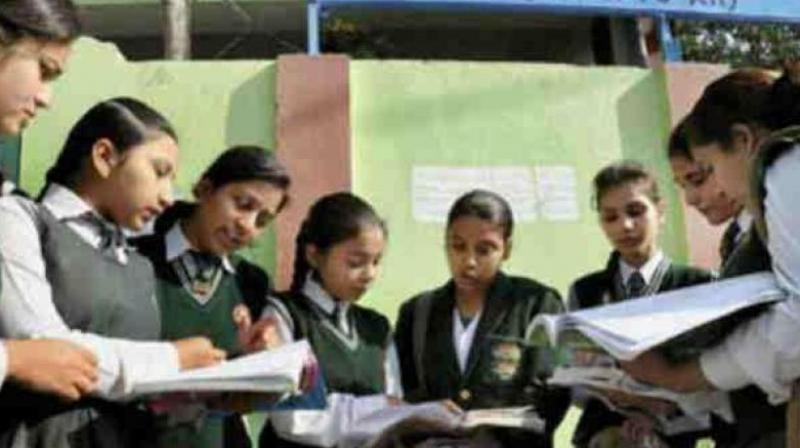Dev 360: Keep school textbooks free of bias, prejudices
The entry point has to be school textbooks without stereotypes and prejudices.

How do you teach prejudice to young people? Perhaps the easiest and most effective method is to have content in school textbooks that prejudice impressionable minds. Children instinctively trust textbooks. They believe what is written there. In most classrooms worldwide, textbooks also play a key role in what and how teachers teach.
Which brings me to a little story that popped up in the news last week and has fallen off the radar already amid exciting twists and turns in Tamil Nadu’s politics and in election-bound Uttar Pradesh. A chapter in a Class 12 sociology textbook in Maharashtra cites “ugliness” and physical handicap of a girl as one of the reasons behind the persistence of dowry in India, alongside the caste system, social prestige, compensation principle, etc.
The exact words, as reported in the media, are: “If a girl is ugly and handicapped, it becomes very difficult for her to get married. To marry such girls, a bridegroom and his family demand more dowry. Parents of such girls become helpless and pay dowry as per the demands... It leads to a rise in the practice of the dowry system.”
The story went viral on social media; activists and many enlightened citizens raised a stink; reporters questioned officials about the case. Last heard, the Maharashtra State Board of Secondary and Higher Secondary Education had said the matter would be looked into. We have been here before. Here is a randomly selected sample of troubling “lessons” in Indian textbooks that grossly undermine efforts at building a more inclusive and gender-sensitive society.
In 2006, a textbook for 14-year-olds in Rajasthan compared housewives to donkeys. In 2012, a textbook for Class 6 students used all over the country created a ruckus when it was found it said people who eat meat “easily cheat, tell lies, forget promises, are dishonest and tell bad words, steal, fight and turn to violence and commit sex crimes”.
Cornered by reporters, the then director of the Central Board of Secondary Education said: “We only recommend books for Class 9 onwards. Books are chosen by individual schools. There is no monitoring of the content of school books.” The book happened to be published by a reputed firm, which also prints textbooks used in hundreds of schools in the country.
In 2015, a teacher in Chhattisgarh drew public attention to a textbook for 15-year-olds that attributed growing unemployment in India after Independence to women taking to the job market. When quizzed by the media, the director of the State Council For Educational Research And Training said: “It’s a matter of debate. It was a writer’s view out of his experience. It’s the teacher’s job how they explain things to students and ask students for their view on whether they agreed with it or not.” If it had not been for the alertness of the teacher, the matter would not have reached the state women’s commission.
So where does the buck stop and who takes the rap for poisoning the minds of young children? After the initial brouhaha, the stories fade from public memory. In a country with a myriad faultlines, how serious are we in rooting out prejudice from textbooks? How does one undo the damage that has already been done to young girls and boys who have been reading such textbooks? There are more questions than answers at this point.
Arguably, the public discussion around curriculum in India is an old one. Textbook controversies are not confined to Maharashtra nor to gender issues. States ruled by the Left and the Right have come under attack from their critics at various points for trying to foist their ideology on young children by tweaking textbooks.
In 2005, academics across the country had expressed concerns about textbooks printed by private publishers. But no action was taken. The National Council of Educational Research and Training has been tasked to weed out gender bias from textbooks. Its efforts have met with partial success. The first report on a gender audit of textbooks of Classes 1 to 5 was published in 2013-14. That report showed progress was made but stereotypes remained in some textbooks.
Women continued to be shown in the all-too-familiar nurturing role or in traditionally acceptable professional careers of a nurse or teacher. Men, on the other hand, were shown in multiple professional roles. It is perhaps not a coincidence that this week the principal of a Bandra-based government-run polytechnic college was also in the news for remarking that when women dress like men, they start thinking or behaving like them and their ovaries suffer as a result! The lady plans to introduce a “suitable” uniform for girl students who currently wear shirt and trousers, as the boys do.
Clearly, the gender bias that seeps into the school curriculum ends up giving credence to gender stereotypes. It took a brutal rape case in New Delhi to highlight the urgency for a curriculum based on gender equity. The committee set up to reform the anti-rape law in the wake of this savagery recognised the need to examine what was being taught to young people right from early years. It recommended gender equality be integrated into the school curriculum. But in 2017, we are still fighting gender bias and many other types of prejudices instituted in early childhood.
Textbooks can foster a spirit of unity or fuel divisions. They are not just founts of knowledge. They help shape social values, an understanding of one’s history and the world. If we want young people to grow up gender-sensitive, tolerant and inclusive, we have to teach them young. The entry point has to be school textbooks without stereotypes and prejudices.

